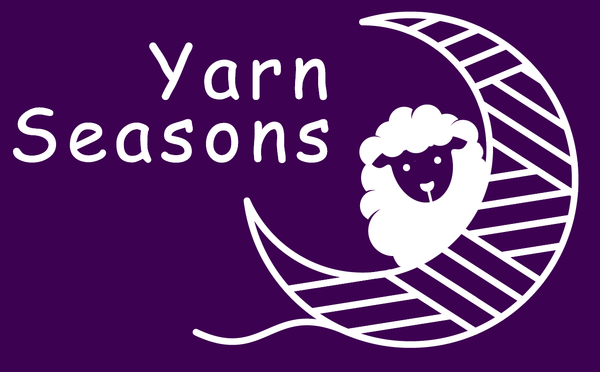Adele's Scarves
Scarves
Adele’s Legacy gives out a lot of scarves. Many people enjoy making scarves, and our children certainly enjoy wearing them! We love to have more scarves to give away, but we do have a few standards! Here are some general things to keep in mind about our scarves.
Scarf Standards
- All scarves we donate are made by hand. No store-bought scarves are considered for donation.
- All the scarves must be made of man-made fibers (acrylic, polyester, nylon). This means no wool, no cotton, no cashmere! This is because the scarves will be LOVED and therefore will need to be washed frequently. If the scarves were made of wool or cotton, they might accidentally be felted or shrunk to the point where they were un-wearable. In order to prevent this we ONLY donate scarves made from easily washable and dryable synthetic materials.
- The scarves we donate are well constructed, hearty scarves. They should all last a long time. To ensure that your scarf is created with the same strong construction please read our Tips and Tricks. We provide advice on all aspects of scarf construction and strongly advise you to take advantage of the education we provide. Sadly, scarves that aren’t made well don’t get donated, and we don’t want that to happen to any of your scarves, so please take a look at our tips!!
- We recommend scarves that are made from worsted weight yarn. If you are new to hand work and want to create a scarf for us you need to ask for “worsted weight acrylic yarn” when you go to your local yarn shop. If you are in Franklin or Bedford County contact us, we might be able to provide you with enough yarn for a lovely scarf!
- Decoration of the scarves is not necessary, but if you want to decorate them, GO FOR IT! Many of our volunteers love to use stripes or variegated yarn (yarn with many colors). Some of our scarves have cables, or other stitch patterns that make the scarf more interesting for the knitter and more attractive to the child who chooses it. Some child will love the scarf, even if it’s the first one you have ever made!
Tips & Tricks for Scarves
Casting on
The method of casting on is not crucial to the “fit” of the scarf. This is a great opportunity to try some new cast on methods, if you like. Here are a few:
Needles
The size of the needle doesn’t really matter with scarves, as long as you get to the suggested length and width. If you use small needles or hooks you will need more stitches, if you use larger needles or hooks you will use less. Larger stitches make the scarf more flexible and soft. Smaller stitches usually make the scarf stiff and less soft, but this totally depends on the yarn.
Length
Scarves should be between 40 and 60 inches long. If they are too short they can’t wrap around a child’s neck to keep them warm, if they are too long they might present a trip hazard.
Width
Scarves should be between 7 and 12 inches wide. This is the width that is most comfortable for most children.
Decoration
You can decorate the scarf with any stitch pattern you choose, of course, but here are some things to keep in mind.
- Stripes are lovely.
- Knitted ribbing, garter stitch or a basket weave pattern doesn’t curl. Most crocheted scarves don’t curl either.
- Patterns that are reversible are a good idea because they look the same on both sides.
- Stockinette stitch (one row knit, one row purl) will cause the scarf to roll and be less cozy, so we don’t recommend it.
- Don’t forget scarves may also be worked along the long way; in this case you need more stitches and fewer rows!
Ends
The ends of the scarf may be left plain, or gathered and topped with a pom-pom or tassel. A fringe may be made with lengths of yarn wound around a book, cut to about 8-10 inch pieces, and pulled through the stitches on each end, two or three in a bunch, using a crochet hook, and knotted.
Joining yarns
There are NO KNOTS in knitting. Please don’t EVER knot your yarn. Knots are ugly, they fall apart over time, can be uncomfortable to the wearer, and are just plain bad knitting! We are so happy to teach you better methods, PLEASE don’t use knots!!! Here are two methods our knitters like a lot.
- Overlay the old and new yarns, and work two stitches with both. Remember to knit it as a single stitch as you come to it in the next row.
- Another method is to split the yarn (both old and new) for about four inches, and overlap half the new and half the old for a couple of stitches (half of each will create a whole to knit with).
Sewing in
There are NO KNOTS in knitting. Please don’t EVER knot your yarn. Knots are ugly, they fall apart over time, can be uncomfortable to the wearer, and are just plain bad knitting! We are so happy to teach you better methods, PLEASE don’t use knots!!!
- Always leave 6 inches minimum for each yarn end you create in your knitting
- Split the yarn in half and sew in each end by skimming, on the underside of the project where it won’t be seen. Skim by putting your needle through just a few strands of a row of stitches. You can go horizontal, vertical, or diagonal. Better yet do it a couple of different ways!
- Whether you are weaving in ends or sewing pieces together your sewing should be FLAT. You should not ever create a bump.
- Your sewing in should not be noticeable on the right side of the work.
